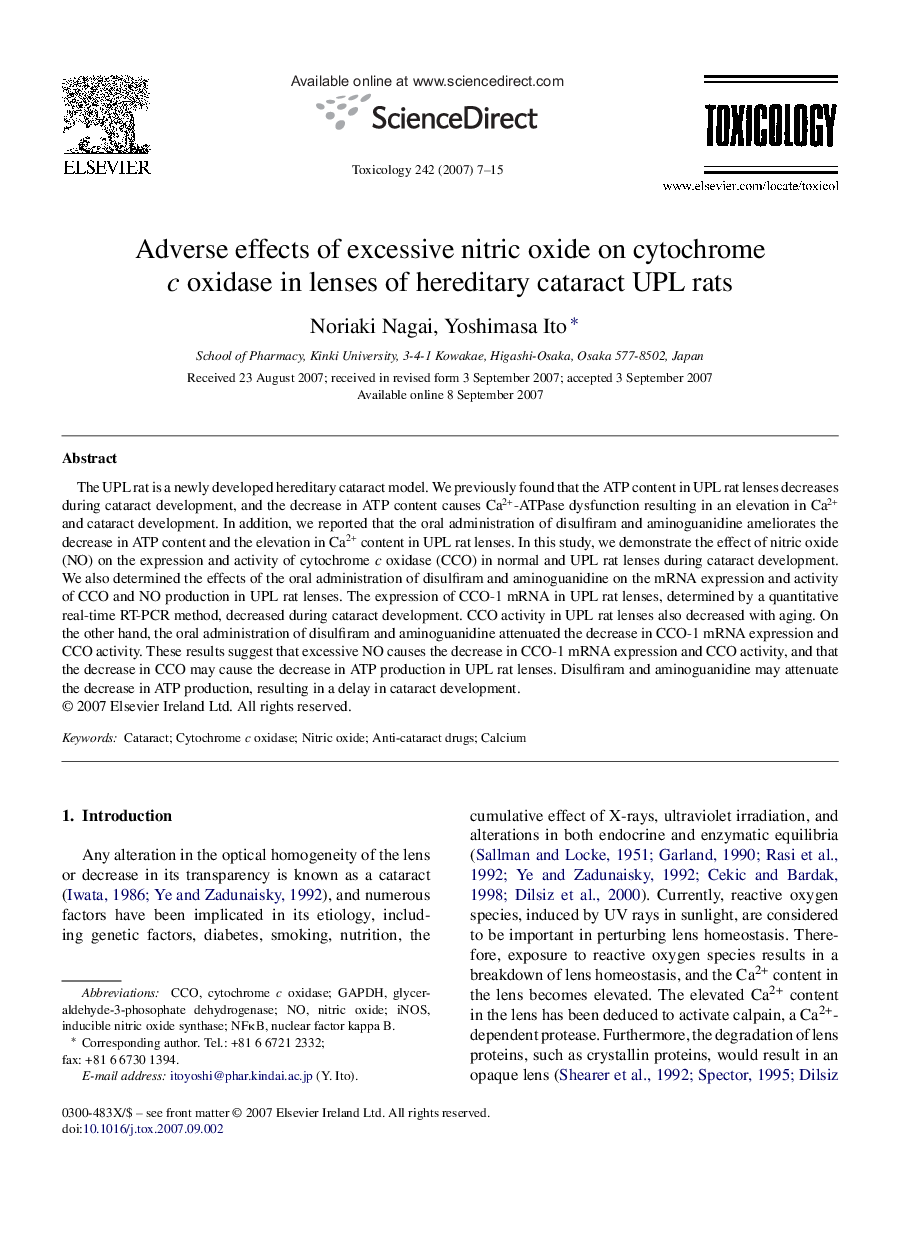| Article ID | Journal | Published Year | Pages | File Type |
|---|---|---|---|---|
| 2597129 | Toxicology | 2007 | 9 Pages |
The UPL rat is a newly developed hereditary cataract model. We previously found that the ATP content in UPL rat lenses decreases during cataract development, and the decrease in ATP content causes Ca2+-ATPase dysfunction resulting in an elevation in Ca2+ and cataract development. In addition, we reported that the oral administration of disulfiram and aminoguanidine ameliorates the decrease in ATP content and the elevation in Ca2+ content in UPL rat lenses. In this study, we demonstrate the effect of nitric oxide (NO) on the expression and activity of cytochrome c oxidase (CCO) in normal and UPL rat lenses during cataract development. We also determined the effects of the oral administration of disulfiram and aminoguanidine on the mRNA expression and activity of CCO and NO production in UPL rat lenses. The expression of CCO-1 mRNA in UPL rat lenses, determined by a quantitative real-time RT-PCR method, decreased during cataract development. CCO activity in UPL rat lenses also decreased with aging. On the other hand, the oral administration of disulfiram and aminoguanidine attenuated the decrease in CCO-1 mRNA expression and CCO activity. These results suggest that excessive NO causes the decrease in CCO-1 mRNA expression and CCO activity, and that the decrease in CCO may cause the decrease in ATP production in UPL rat lenses. Disulfiram and aminoguanidine may attenuate the decrease in ATP production, resulting in a delay in cataract development.
